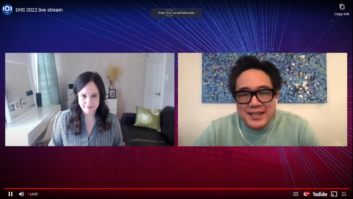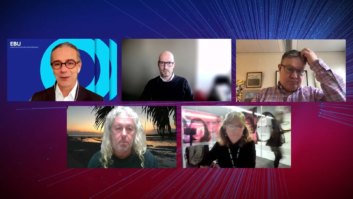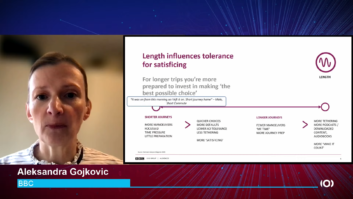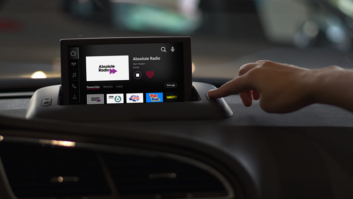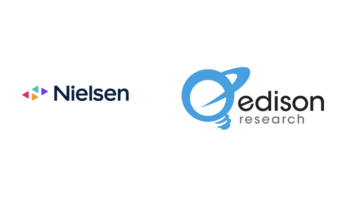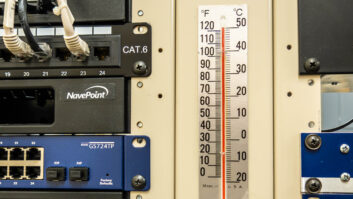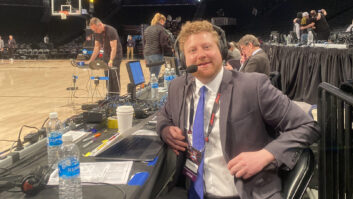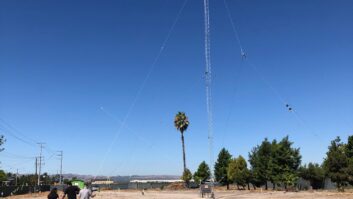One in a series of articles about the recently concluded EBU Digital Radio Summit.
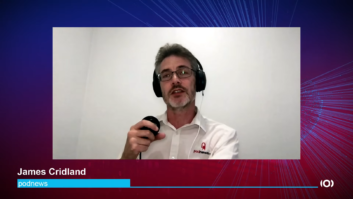 If broadcasters want to attract young listeners, they need to offer content that focuses on human connections and shared experiences, more than Top 40 hits.
If broadcasters want to attract young listeners, they need to offer content that focuses on human connections and shared experiences, more than Top 40 hits.
That’s the message radio futurologist and Podnews editor James Cridland delivered during his keynote address to the European Broadcast Union’s (EBU) Digital Radio Summit. The summit was held online February 16, 2022.
“Ten great songs in a row is absolutely fine and a great radio programming technique, but it isn’t something that radio can do by itself anymore,” Cridland declared. “Spotify can do that very well.”
Radio’s decline amidst record listening
James Cridland began his address by noting how well radio appears to be doing these days.
“Radio is still tremendously popular,” he said. “Whether you are in the UK or New Zealand or Finland or the U.S., nine out of 10 people are listening to the radio every single week.”
The trouble begins when one starts to dig deeper into the audience numbers. For instance, EBU data cited by Cridland showed “about a 3% decline in the last five years in terms of total audience, and a 6% decline in terms of younger audiences as well.” Meanwhile, total audience listening is “down by 7% in the last five years,” said Cridland, and “when you have a look at younger audiences, then you can see that nearly one out of five [listening] hours has gone away in the last five years.”
So why are U.K. radio audiences looking so strong in the research? “It’s only the fact that there are more old people in the U.K. that is keeping the figures up as high as it is,” he said.
Meanwhile, young listeners who aren’t tuning into radio now, won’t suddenly do so as they age. “You don’t grow into listening to more radio,” quipped Cridland. “So, we are not going to see a lot of people suddenly starting to listen to tons more radio because they happen to hit 30.”
The way back for radio
When it comes to reaching younger listeners, Cridland wants to target them where they are.
This isn’t on smart speakers, where 72% of the content consumed is radio, he said. Rather, it is on their smartphone-connected headphones.
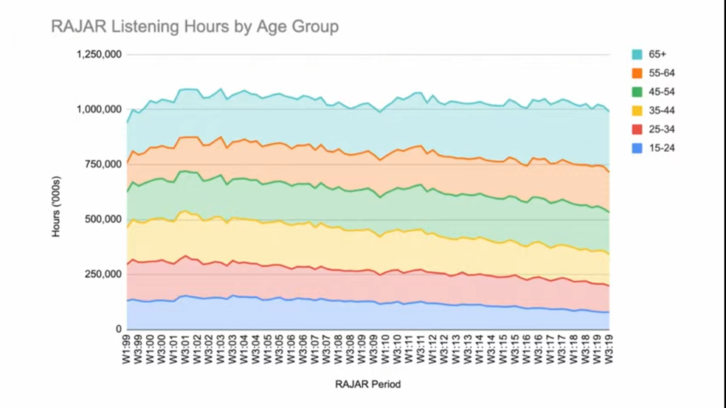
“When you ask people, ‘what are you listening to on your headphones?’, podcasts and audio books are the No. 1 choice,” said Cridland. “Live radio is the least most popular in terms of 11%.”
The big takeaway: The 13–34 audience is listening to in-depth, meaningful spoken-word content when they listen to podcasts and audiobooks — the kind of content commercial radio rejected decades ago when it went Top 40.
This spoken-word content tends to focus on human connections and shared experiences, and it’s a model that radio must seize upon if it is to become relevant to younger listeners again. “That’s why people turned to radio in the middle of the pandemic because they wanted other human voices,” Cridland said. “They wanted that shared experience, [contact with] the other person who was out there dealing with the same things that they were dealing with as well.”
As for “live and local” being radio’s edge? “I would argue that live actually isn’t important at all … [and] that local is just another way of saying relevant,” he said. “Relevant content for people could be local, [it ] could be talking about what’s going on in their town in their city, [or it] could be talking about very, very other things as well … So real and relevant are very key parts of the content strategy that we should have in terms of radio.”
Cridland also advised radio broadcasters to stop defining themselves in terms of their delivery mechanisms (i.e., AM, FM, and DAB), and start thinking of themselves as content providers first.
As well, being live is less important in an online age where on demand content is so popular. He made his point by citing some Australian audio content that is recorded and then served out on radio and on demand, to maximize reach and penetration.
“I’m talking about making stuff, particularly in terms of great pieces of audio, that you can pre-produce and make sound absolutely fantastic as well,” he said.
Quoting from a U.S. patent application to underscore his point, Cridland said, “’traditional broadcast radio spends billions of dollars creating millions of hours of creative audio content that is only used once.’ And it’s [only] when you see that written down in black and white, then you suddenly realize, ‘oh, we could be doing so much more with the great content that we are making by packaging it up so that we can reuse it on the air, so that we can give that to other audiences.’”
In closing, Cridland said radio has a future, and “it’s focused less on music and more on speech. These days it’s producing audio for on-demand first, rather than live, which helps get the most value out of the audio. And I believe that the future is less about broadcasting and more about reaching audiences across multiple platforms, however they want to consume it.”
Related stories:
- In-Car Listening Influenced by More Than Music Taste
- How CBC Radio Manages Its Wealth of Digital Content
- EBU Summit Engages in ‘Great Debate’ Over Radio Distribution
James Careless is an award-winning freelance journalist with experience in radio/TV broadcasting as well as A/V equipment, system design and integration. He has written for Radio World, TV Tech, Systems Contractor News and AV Technology among others. Broadcast credits include CBC Radio, NPR and NBC News. He co-produces/co-hosts the “CDR Radio podcast” and is a two-time winner of the PBI Media Award for Excellence.
